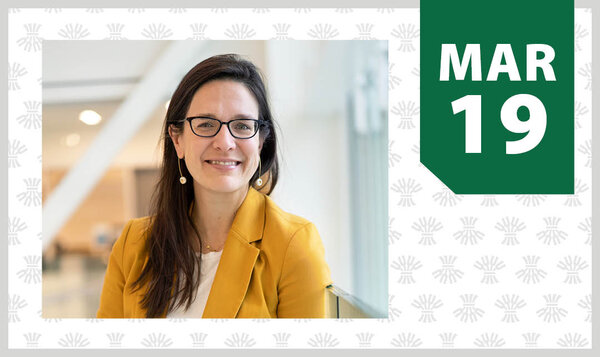
Historian sees resurgence in LSD research
Erika Dyck, Canada Research Chair in the History of Medicine, says the potential medical benefits of psychedelic drugs are receiving a closer look as our population ages
More than 50 years ago, prominent English writer and philosopher Aldous Huxley had his wife inject him with LSD on his deathbed, an act that could have parallels for aging populations in the 21st century.
“He describes this in a way that has become very useful for people thinking about ‘how do you accept death?’” said University of Saskatchewan (U of S) medical historian Erika Dyck, a Canada Research Chair and expert in the early days of LSD research.
“It’s not going to make you feel better, it’s not going to relieve pain, but there’s a psychological anguish that he describes, and how LSD confronts that, or encourages the individual to confront that.”
In a recently published paper in the Canadian Medical Association Journal (CMAJ), Dyck argues that after years of languishing on the fringes of science, tainted by the abuses of mid-20th century counterculture, today’s society may have “changed enough to warrant a retrial” of LSD.
While the concept of taking drugs to stay healthy was a new one back in the 1950s, it’s accepted today for a variety of conditions from heart disease to anxiety and depression. In addition, Western societies are facing the looming health care costs of the “silver tsunami” that is the baby boom generation.
“The future of psychedelics might be decidedly different,” Dyck said. “Not because the science of psychedelics has necessarily changed what we know about them, but I think the context in which we might consume them has changed quite a lot.”
Research tools have also opened windows unavailable to scientists in the mid-20th century. For example, advanced medical imaging techniques allow researchers to see what the brain is up to while a patient is experiencing mind-altering experiences brought on by profound meditation or drugs.
LSD, or lysergic acid diethylamide, belongs to a class of drugs called psychedelics, a term coined by British psychiatrist Humphry Osmond at Weyburn Mental Hospital. At the time, Saskatchewan was the epicenter of research into the drug.
“People don’t tend to think of Saskatchewan as the birthplace of LSD,” Dyck said, explaining that Osmond and his contemporaries considered the drug a tool for intensive psychotherapy. This suggests applications not only in palliative care, but in other tough-to-treat mental illnesses such as anxiety and depression.
“One of the researchers in Regina said, ‘you could be in psychotherapy for 10 years to develop the kind of insight you can get in eight hours from LSD,’” Dyck said.
While she occasionally gets calls from researchers looking for information and even advice on things like drug trial design, Dyck emphasizes that her own expertise is the past, although she acknowledges it may inform future directions.
“I’ve talked to a couple of contemporary LSD researchers and I always find it fascinating to contribute,” she said. “Perhaps it’s time to bring historians onto the research teams as we develop interdisciplinary collaborations to explore this frontier.”
While LSD was synthesized by Sandoz Laboratories (now Novartis) in the 1950s, other psychedelics, from peyote cactus buttons (mescaline) and ‘magic’ mushrooms (psilocin) have been used for centuries in various cultures in religious rites and ceremonies.
In Weyburn, researchers’ experiments focused on LSD’s effects and possible clinical targets. One of these was alcoholism – specifically, the challenge of getting an addict to admit to their problem. The treatment met with some success. While Dyck explained it didn’t cure alcoholics per se, it helped them ‘get over themselves,’ that is, admit they needed help. One alumnus of the tests went on to found Alcoholics Anonymous.
Mainstream research on psychedelics sunk in a “perfect storm” of factors, she explained. These included the difficulty in separating LSD’s effects from environmental noise such as pleasant music and surroundings that might in themselves make people feel better.
“There were repeated attempts to find mechanisms for measuring the effect of the drug in a sort of clean, sanitized, specific way, and they often fell short,” she said.
LSD also had a lot of competition in the 1950s, a decade where more psycho-pharmaceutical drugs came on the market than any other decade. Many of these were intended to be taken for the rest of a patient’s life. The few treatments for which LSD showed potential required a few doses at most, and in any case, Sandoz had never bothered to patent the substance.
When combined with counterculture and traditional uses and abuses of LSD and other psychedelics and the spiritual and religious cachet that comes with them, Dyck explained most scientists turned away from this area of research.


